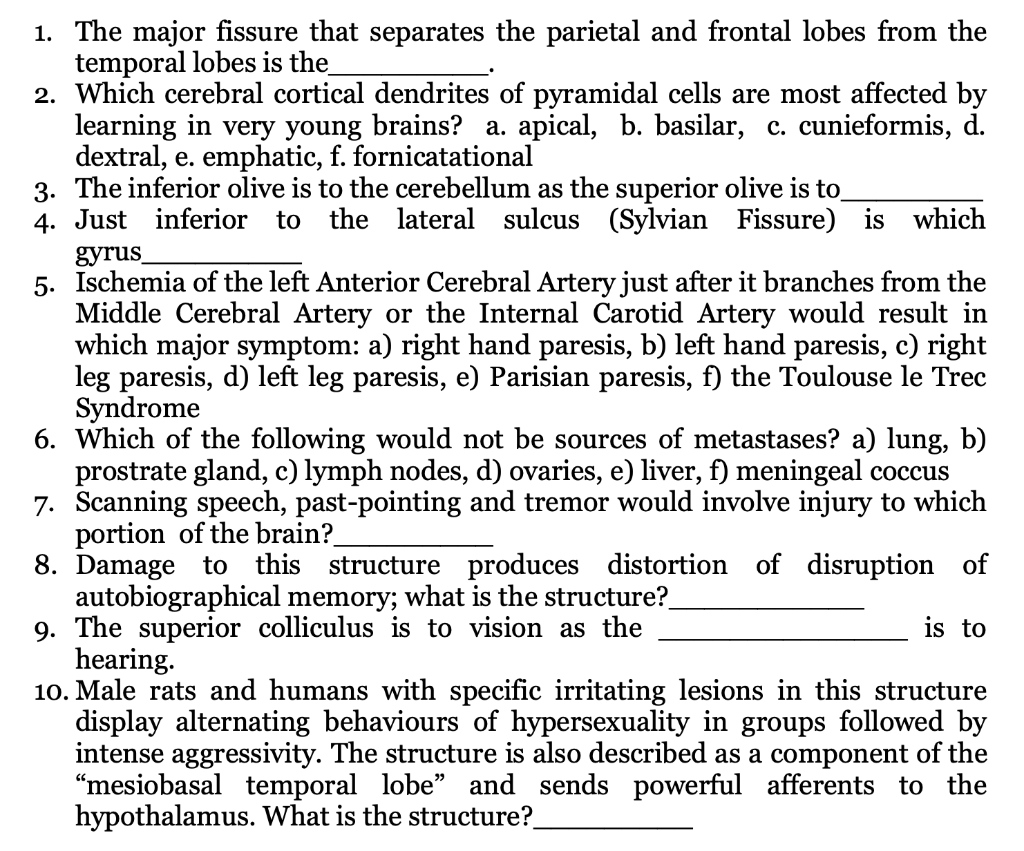Home /
Expert Answers /
Psychology /
please-answer-all-most-1-the-major-fissure-that-separates-the-parietal-and-frontal-lobes-from-th-pa416
(Solved): Please answer all/most 1. The major fissure that separates the parietal and frontal lobes from th ...
Please answer all/most
1. The major fissure that separates the parietal and frontal lobes from the temporal lobes is the 2. Which cerebral cortical dendrites of pyramidal cells are most affected by learning in very young brains? a. apical, b. basilar, c. cunieformis, \( d \). dextral, e. emphatic, f. fornicatational 3. The inferior olive is to the cerebellum as the superior olive is to 4. Just inferior to the lateral sulcus (Sylvian Fissure) is which gyrus 5. Ischemia of the left Anterior Cerebral Artery just after it branches from the Middle Cerebral Artery or the Internal Carotid Artery would result in which major symptom: a) right hand paresis, b) left hand paresis, c) right leg paresis, d) left leg paresis, e) Parisian paresis, f) the Toulouse le Trec Syndrome 6. Which of the following would not be sources of metastases? a) lung, b) prostrate gland, c) lymph nodes, d) ovaries, e) liver, f) meningeal coccus 7. Scanning speech, past-pointing and tremor would involve injury to which portion of the brain? 8. Damage to this structure produces distortion of disruption of autobiographical memory; what is the structure? 9. The superior colliculus is to vision as the is to hearing. 10. Male rats and humans with specific irritating lesions in this structure display alternating behaviours of hypersexuality in groups followed by intense aggressivity. The structure is also described as a component of the "mesiobasal temporal lobe" and sends powerful afferents to the hypothalamus. What is the structure?
